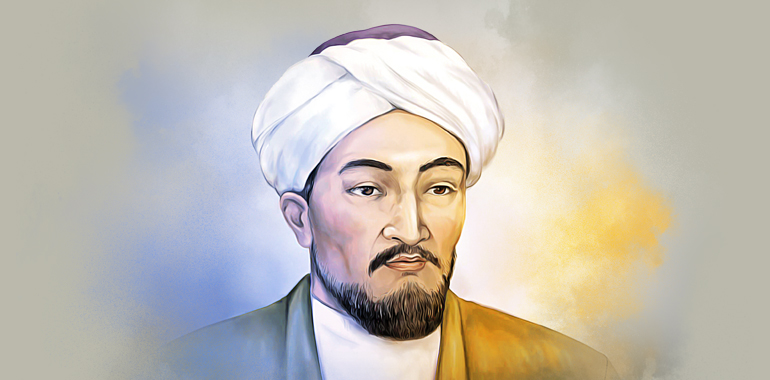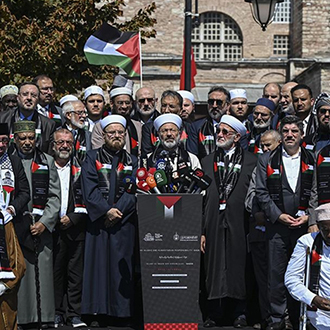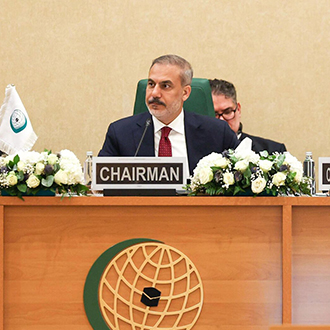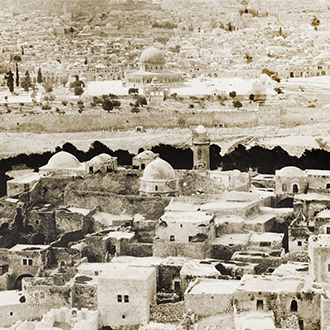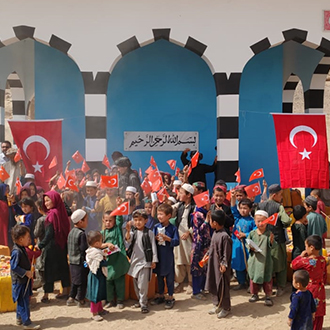Experiencing this atmosphere, al-Farabi studied logic with Christian Nestorian scholars and learned about the ancient Greek philosophers, especially Aristotle. In particular, studying logic under Abu Bishr Matta ibn Yunus, a Nestorian Christian, broadened his horizons considerably. From this teacher, he learned the method of expressing the most complex philosophical problems in a simple manner. But now his only passion was Aristotle. But now, all his efforts would be to understand this ancient Greek philosopher.
From then on, his entire life would be spent in the pursuit of wisdom under the guidance of Aristotle, reading, thinking, and writing without rest. In this respect, al-Farabi’s writings on philosophy and logic earned him a special place among the Muslim philosophers of the Middle Ages. In fact, in the words of the renowned social scientist Ibn Khaldun, he was considered the person who understood and interpreted Aristotle best; hence, he was known as “the second master” (Mu’allim al-Thani) right after Aristotle. The philosopher, who resided in Baghdad for twenty years, the intellectual and cultural epicenter of the Muslim world, and penned the majority of his works there, was compelled to depart the city amidst the political upheaval that ensued. His initial destination was Damascus, followed by Aleppo.
Days in Damascus
When al-Farabi left Baghdad, he left behind not only a city but also many years during which he authored many works. Upon leaving Baghdad, he journeyed to Aleppo, where he was welcomed at the palace of the Hamdanid Emir Sayf al-Dawla, attired in his Sufi garb. Subsequently, he accompanied the Emir to Damascus. During his stay there, it is reported that he briefly returned to Egypt before returning to Damascus. Throughout his years in Damascus, he continued his studies under the patronage of the palace, a pursuit that spanned most of his life. Although one of the most famous Arab poets, al-Mutanabbi, claimed that his life ended at the hands of thieves while he was traveling between Damascus and Asqalan, historians have not been able to find sufficient evidence for such an event. What is known is that he passed on in Damascus at the age of eighty, that his funeral was attended by the Emir of Damascus, Sayf al-Dawla, and many other dignitaries, and that he was buried outside the neighborhood called Bab al-Saghir.
A glimpse into the soul of a scholar
Al-Farabi was a man who did not indulge in worldly comforts. He spent all his time reading and writing. It is even said that he read Aristotle’s Physics forty times and De Anima (On the Soul) two hundred times in order to understand it thoroughly. He never gave up the Turkish attire he wore throughout his life. In his final years, al-Farabi found a conducive working environment, supported by his patron, Emir Sayf al-Dawla, who ensured his sustenance.
One day, in the presence of the Emir, an intriguing incident unfolded. Speaking in a language reserved for their exclusive use, the Emir informed prominent statesmen that al-Farabi would be posed with questions, and failure to answer would result in his expulsion. Al-Farabi, who understood what was being said, reassured straight away the Emir in the same language to be patient and that the end of the matter was important. Astonished, Sayf al-Dawla inquired, “Do you understand this language?” To which the philosopher calmly responded, “I am conversant in over seventy languages.” Subsequently, the scholars present at the gathering debated with him on various topics. When al-Farabi overwhelmed them all, they had no choice but to remain silent and listen to him, then take out their notebooks and start taking notes.
Undoubtedly, this polymath was not only proficient in unraveling philosophical enigmas but also possessed a profound mastery of music. During one gathering in the presence of the Emir, al-Farabi discerned flaws in the melodies performed by the musical ensemble. With characteristic expertise, he rectified the errors and proceeded to deliver an extraordinary lesson through his own performance. Extracting his musical instrument, he played a jubilant song that elicited cheers and laughter. Swiftly shifting the tune, he invoked a somber composition, prompting tears to flow freely. Yet, his demonstration did not conclude here. Adjusting the tuning of his instrument once more, he played another piece, inducing a tranquil slumber upon all, even the guards. Then al-Farabi packed up his instrument and left the palace.
What legacy did al-Farabi leave to humanity?
Al-Farabi, the leading name of the al-Mashsha’iyun (Peripatetic) philosophy in the history of philosophy, is said to have written more than one hundred works, but today we have thirty-nine of them. Most of these works are interpretations of Aristotle. In particular, his work, Ihsa al-’Ulum (Enumeration of the Sciences), is a summary of the sciences of language, logic, mathematics, physics, chemistry, economics, and politics of his time.
Al-Farabi based his philosophy on the idea that Aristotle used to prove the existence of Allah. According to him, the existence of a chain of causes would indicate the existence of a first cause. A series of motions required a force that caused the first motion. Plurality was proof of oneness. The greatest goal of philosophy, which was never achieved, was to find the first cause, that is, Wajib al-Wujud. The first way to approach this knowledge was through the purity of the soul.
According to al-Farabi, philosophy is the knowledge of existence as a being. According to him, the first principle and the ultimate goal of existence could be found through philosophy, which is an all-encompassing and comprehensive science that places the entire universe before us. Al-Farabi had an unshakable trust in logic. So much so that he raised the most complex questions of metaphysics based on the principles of logic and tried to solve them. The propositions that gained importance in the West with Kant had been put forward by al-Farabi centuries before. Al-Madinah al-Fadhilah (The Ideal City), one of his works, was a masterpiece of political philosophy. Al-Farabi begins this work with a description of the law of nature and asks how human society has escaped this law of the jungle.
In the history of philosophy, this has been much debated in later periods. According to some, society began as a result of an agreement between individuals. J. J. Rousseau was the main proponent of this view. Others argued that society began when the strong dominated the weak. This group, in line with Nietzsche’s view, argued that states were also rival organisms. According to this view, the right belongs to the strong.
Al-Farabi, on the other hand, opposed this idea. According to the conclusion he reached in this work, people would be able to reach the truth by establishing a society based on reason, sacrifice, and love, not on greed, strife, and jealousy. This would be possible with a sovereignty based on social religious faith. The basis of al-Farabi’s moral philosophy is education and good behavior, and the ultimate goal is happiness. According to him, happiness is such a value that it is not a means to anything but a direct objective. Because after achieving happiness, people find all kinds of satisfaction in it and do not need anything else.
The philosophical doctrine he established soon spread throughout Muslim geography, from Transoxiana to Andalusia, both through his disciples and their works and through the philosophers who criticized him. However, its influence extended beyond these boundaries. His works influenced not only Muslim scholars but also Latin writers of the Middle Ages. Furthermore, they served as the catalyst for sparking the enlightenment of Renaissance Europe, transmitted through the conduit of Andalusia.



